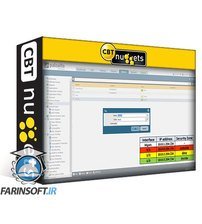در حال حاضر محصولی در سبد خرید شما وجود ندارد.

This entry-level CompTIA Network+ training prepares learners to take the N10-008 exam, which is the one required exam to earn the Network+ certification.
The Network+ certification from CompTIA is one of the most popular IT certifications in the world. The Network+ is so popular because it doesn't cover any one vendor or manufacturer. Instead it focuses on broad concepts that apply to any network or operating system.
در این روش نیاز به افزودن محصول به سبد خرید و تکمیل اطلاعات نیست و شما پس از وارد کردن ایمیل خود و طی کردن مراحل پرداخت لینک های دریافت محصولات را در ایمیل خود دریافت خواهید کرد.

پیکربندی روتینگ در Cisco SD-WAN بوسیله OSPF and BGP
--Optimize-with-Rapid-Spanning-Tree-main-resized.jpg)
آموزش کامل 350-401 ENCOR : بهینه سازی شبکه با Rapid Spanning Tree
--Customize-Spanning-Tree-Protocol-main-resized.jpg)
آموزش کامل 350-401 ENCOR : سفارشی سازی Spanning Tree Protocol

فیلم یادگیری Getting Started with Palo Alto Firewalls v8.x

CCT Routing & Switching Online Training

Fortinet NSE 6 – FortiAuthenticator Online Training

CCT Routing & Switching Online Training
-Assessment-Lab-main-resized.jpg)
دوره تمرین عملی Cisco CCNA (200-301)

*2023*CompTIA A+ Simulations for Core 1 and 2 220-1101/1102

پیاده سازی امنیت وب و ایمیل ها بوسیله Cisco WSA and Cisco ESA
✨ تا ۷۰% تخفیف با شارژ کیف پول 🎁
مشاهده پلن ها